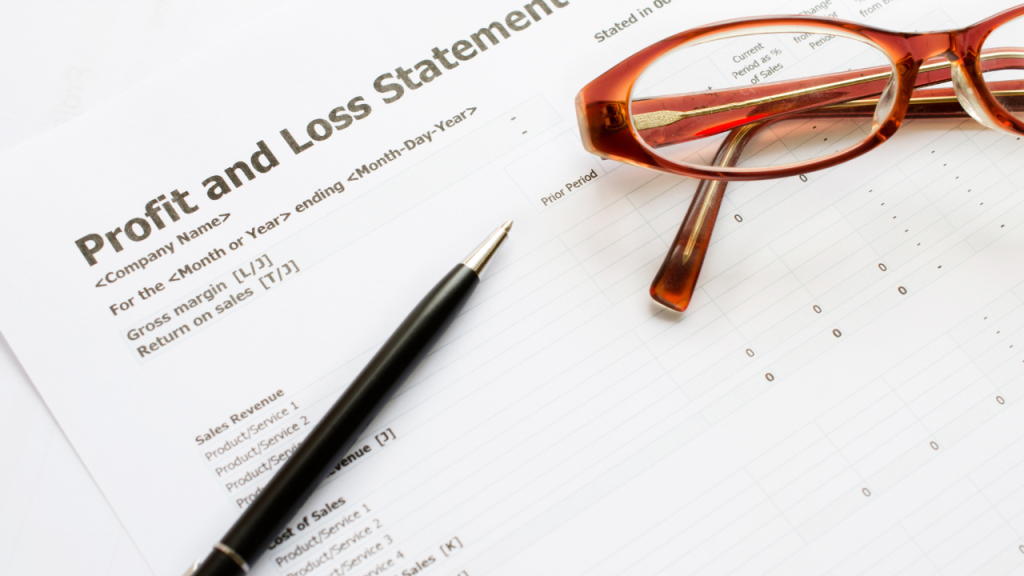Hi there fellow business owners,
Your Statement of Profit & Loss, or Income Statement, tracks the overall performance of your business. It begins with the Gross Profit from your Trading Account then lists all overhead expenses, giving you the Net Profit.
Your Net Profit (or loss) is the amount left over after all expenses have been paid, including tax. Unlike the Trading Account, your Profit & Loss shows all fixed costs. These are the costs which remain the same no matter what your sales level is, e.g. electricity, office expenses, bad debts, accounting fees, vehicle expenses, depreciation, etc.
Key Ratios:
Net Profit Percentage: This is the amount of Sales available as profit after all expenses, including tax, have been paid.
For example, if Net Profit is $100,000 and Sales are $1,000,000, the Net Profit Percentage is 10%, so you make 10c profit for every $1 of sales.
The higher the Net Profit Percentage, the better, as it shows how profitable your business is. To increase your Net Profit Percentage, review your fixed costs and find areas to save or increase your sales or margin.
Overhead Ratio(s): This shows the percentage of Sales spent on Overheads.
The goal is to have a low Overhead Ratio; spending less on Overheads and retaining more as profit. For example, if total Overheads are $150,000 and Sales are $1,000,000, the Overhead Ratio is 15%, so for every $1 of sales, 15c is spent on Overheads.
If you’re spending $10,000 per year on advertising, check if 1% is in line with industry benchmarks for your business (or compared to the percentage in prior years or in your budget). To reduce your Overhead Ratio, go through each overhead expense and determine whether it could be reduced or cut completely. For example, online meetings instead of in-person meetings will likely save a significant amount.
Be careful when cutting Overheads, as some may indirectly contribute to your profit.
Statement of Profit & Loss Tips:
- Profit is a driver of business value. Most businesses are valued using a multiple of profit (usually Earnings Before Interest and Tax or EBIT) so, the higher the profit, the higher the business value.
- Accounting / bookkeeping fees should be an investment, not a cost. If you view what you pay us as a cost, that cost ought to be cut; but if you see us as a strategic partner, helping you run a more successful business, then our fees are an investment in your business, not a cost to cut.
- Fixing the Balance Sheet can fix the Statement of Profit & Loss too. Looking at the Profit & Loss in isolation won’t reduce certain costs. For example, slow collection of debtors may mean a higher overdraft and more interest, increasing costs in your Profit & Loss. Likewise, you may be incurring bad debts or debt collection costs. Having loans structured incorrectly could mean you pay more interest than necessary. For example, an overdraft carries a higher interest rate than a term loan, and banks usually charge less than finance companies.
- Make sure you’re accounting for a fair wage to working owners. Consider what you’re being paid for the hours you work. You may be making a profit, but if you divide that by the total hours worked, you may be working for below minimum wage. Paying yourself a fair wage ensures the true cost of running the business is reported. There are tax implications to consider, so talk to us about the best way to record your effective wage cost.
- Tax savings increase your profit and cashflow. Talk to us about strategies to legitimately minimise your tax.
Book a call HERE and we will help you!
Mick
I’d love to help you achieve your business dreams, please don’t hesitate to contact me;
07 5646 4050
mick@ignitionaccountants.com





 Digitally enhanced by
Digitally enhanced by